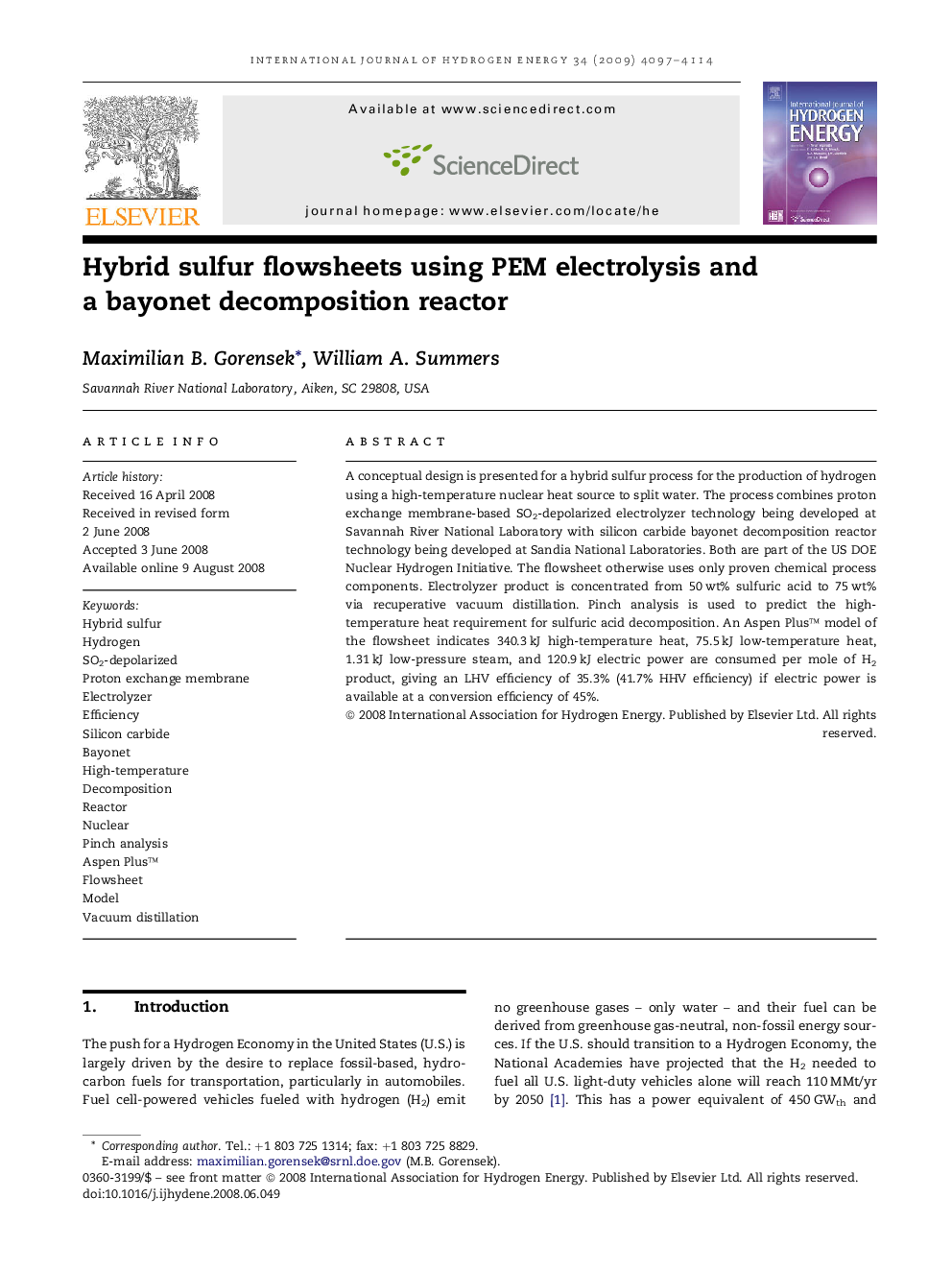| Article ID | Journal | Published Year | Pages | File Type |
|---|---|---|---|---|
| 1279045 | International Journal of Hydrogen Energy | 2009 | 18 Pages |
A conceptual design is presented for a hybrid sulfur process for the production of hydrogen using a high-temperature nuclear heat source to split water. The process combines proton exchange membrane-based SO2-depolarized electrolyzer technology being developed at Savannah River National Laboratory with silicon carbide bayonet decomposition reactor technology being developed at Sandia National Laboratories. Both are part of the US DOE Nuclear Hydrogen Initiative. The flowsheet otherwise uses only proven chemical process components. Electrolyzer product is concentrated from 50 wt% sulfuric acid to 75 wt% via recuperative vacuum distillation. Pinch analysis is used to predict the high-temperature heat requirement for sulfuric acid decomposition. An Aspen Plus™ model of the flowsheet indicates 340.3 kJ high-temperature heat, 75.5 kJ low-temperature heat, 1.31 kJ low-pressure steam, and 120.9 kJ electric power are consumed per mole of H2 product, giving an LHV efficiency of 35.3% (41.7% HHV efficiency) if electric power is available at a conversion efficiency of 45%.
